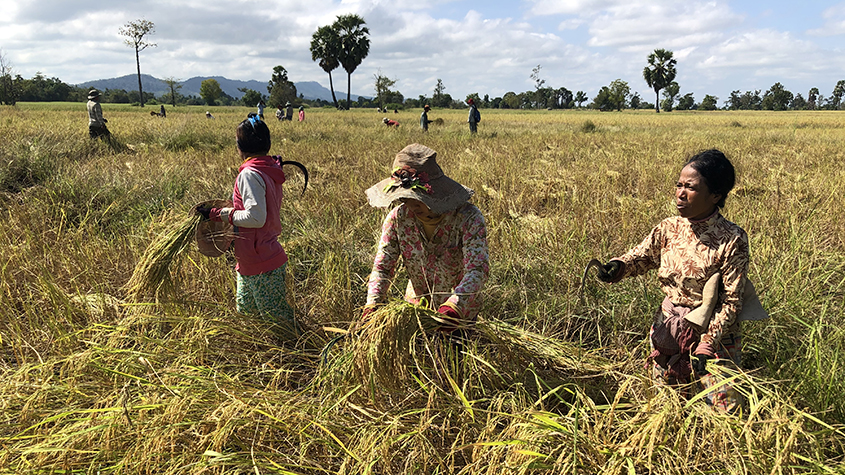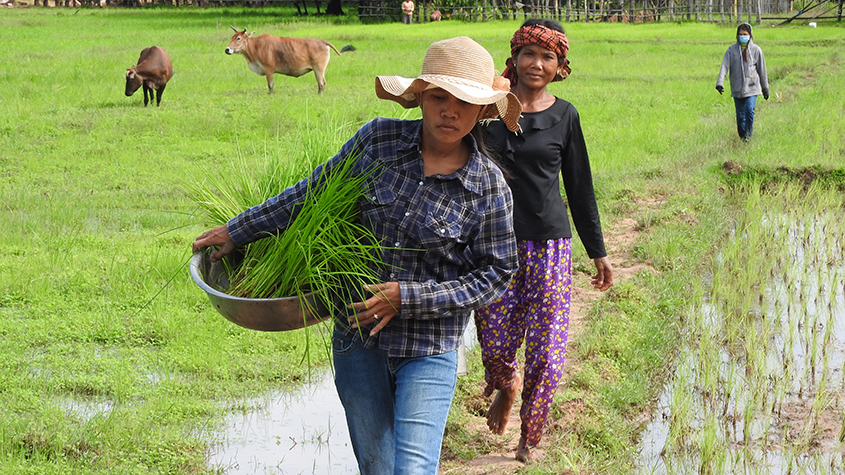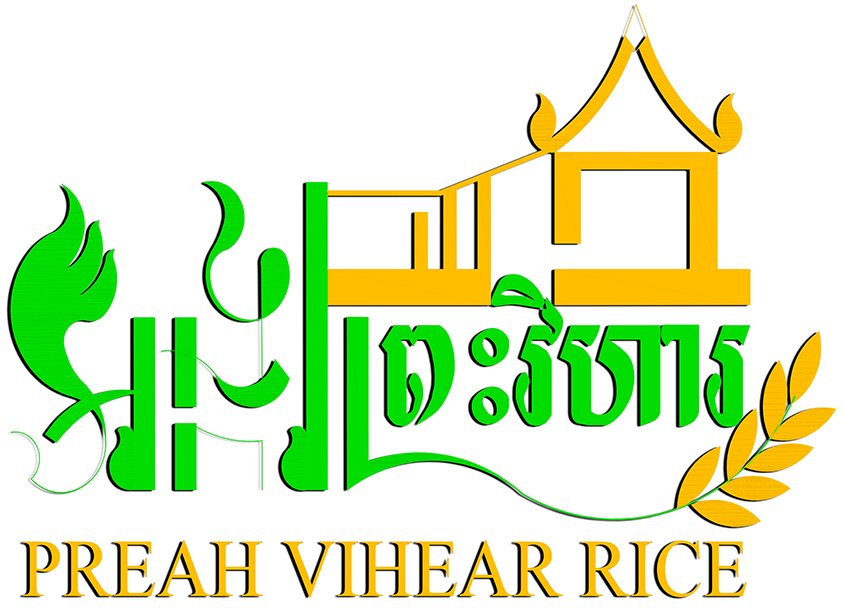“A Collective Mark Raises Hopes of Better Revenue for Organic Rice Producers in Cambodia”
In Preah Vihear, a rural province about 300 kilometers north of Phnom Penh, rice has always been cultivated. A union of 25 cooperatives’ members including over 4,300 small rice producers, 3,000 of which are women, recently obtained a collective mark for the Preah Vihear Rice, hoping to increase revenue for producers, and in the future enter international markets.
Until 2013, according to Oeur Sam Ath, Executive Director of Preah Vihear Mean Chey Union of Agricultural Cooperative (PMUAC), the rice producers in the region sold their harvest certified as organic to millers (rice processing companies) or rice exporters. In Preah Vihear, the rice is produced traditionally, but with the rise of the demand for organic rice, producers were more and more inclined to switch from conventional to organic production.
By 2013, the Cambodian government had supported the creation of agricultural cooperatives, disseminated across the seven districts of Preah Vihear. The cooperatives worked in isolation and each had to negotiate prices with buyers. To increase their bargaining power, eight cooperatives soon formed PMUAC in 2016.
As market demand rose, said Sam Ath, so did the number of cooperatives wanting to join the union. In late 2016, 4 more cooperatives had joined, in 2017, the union counted 22 members, and the number climbed to 25 in 2021. The production followed the same trend, with 1,500 metric tons in 2015, and 14,000 metric tons in 2021.

As of 2021, 43 agricultural cooperatives are established and operated in the province of Preah Vihear. “In the future, we hope all cooperatives will be part of PMUAC,” he said.
The collective mark is owned by PMUAC and covers three varieties of organic rice: fragrant rice, white rice, and sticky rice.
Preah Vihear Rice Small Producers’ Shift to Organic
Hem Sophal and In Sdeung are both rice producers, living in different districts, and members of PMUAC.
Hem lives in Peuk village, Putrea commune, in Chey Saen district. The 38 years old decided to produce organic rice one year before joining PMUAC because it sells at a higher price than conventional rice. Living in a rural area, rice farming is the main income for his family. He started growing rice when he was a child, with his parents, back in 1997. The farm is still a family business, producing 4 tons of rice/year, on 3.5 hectares.
For Hem, switching from conventional rice to organic rice production was easy since he never used fertilizers or chemical inputs to protect the soil’s fertility.
In lives in the village of Sethakech, in the district of Tbaeng Mean Chey. The 51 years old is a rice producer and the President of the cooperative called Kaelomor Chivorpheap Rosnov Agricultural Cooperative. She took up rice-producing after her parents, and turned to organic production in 2012, before the cooperative joined PMUAC.
She cultivates rice on 12 hectares, producing about 21.6 metric tons/year, with what remained a family business, and the occasional hired help. In the cooperative, she said, there are mostly women producers, but in rice-producing, men and women work together with separate duties. “Women usually transplant the rice seedlings in the field, weeding, and they are the ones joining the cooperative and participating in activities.”

Contrary to Hem, for In, switching from conventional to organic rice production was not easy since she could not use any inputs and the yield was lower than with conventional rice with inputs. “But I still decided to become an organic rice producer to preserve my health, as well as consumers’ health. Growing organic rice also maintains a healthy soil on the farm, and benefits the environment,” she said. The selling price of organic rice is also higher than conventional rice.
Joining PMUAC Brings Hope of Good Price
For Hem and In, joining PMUAC proved valuable. “I can sell my rice paddies with other rice producers in large amounts through contract farming schemes with buyers under the facilitation and coordination of PMUAC, so I don’t have to worry about finding markets for selling my rice and obtaining a good price,” said Hem.
“The cooperative joined PMUAC because on its own it would be difficult to find a market for the rice produced by cooperative members since they produce only small volumes,” said In. “Joining PMUAC brought us a lot of benefits, particularly because PMUAC negotiates prices with buyers so all cooperatives get the same price.” PMUAC members also exchange information on technical or market aspects, she added.
The certified quality standards of the Preah Vihear Collective Mark
The Preah Vihear Rice follows organic international standards, explained Savoeurn Meang, Agronomy Coordinator for Agronomes et Vétérinaires Sans Frontières (AVSF), the main partner of PMUAC.
The collective mark provides a common technical standard for Preah Vihear Rice cultivation, drying, and packaging, he said, adding that the expected benefits are better prices, the preservation of the biodiversity, and the environment as no chemical inputs are used, and the protection of children’s rights.

“We are also certified Fair Trade and follow the Fair Trade standards,” said Sam Ath. “We note the number of the labor in the family and compare the production size with the labor. We count the number of children in the family and we have an internal control system.”
Source: WIPO

 Client Focus
Client Focus